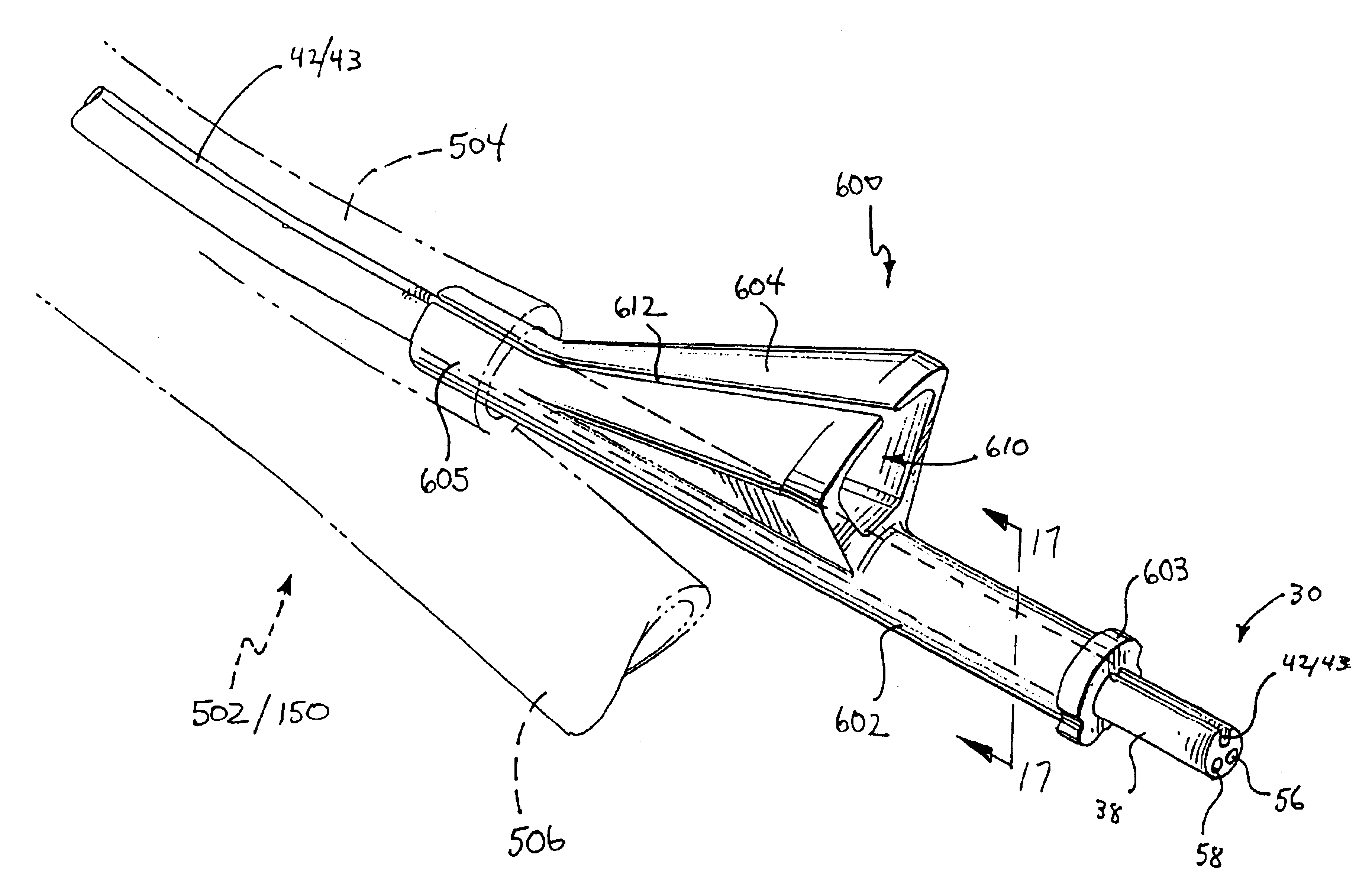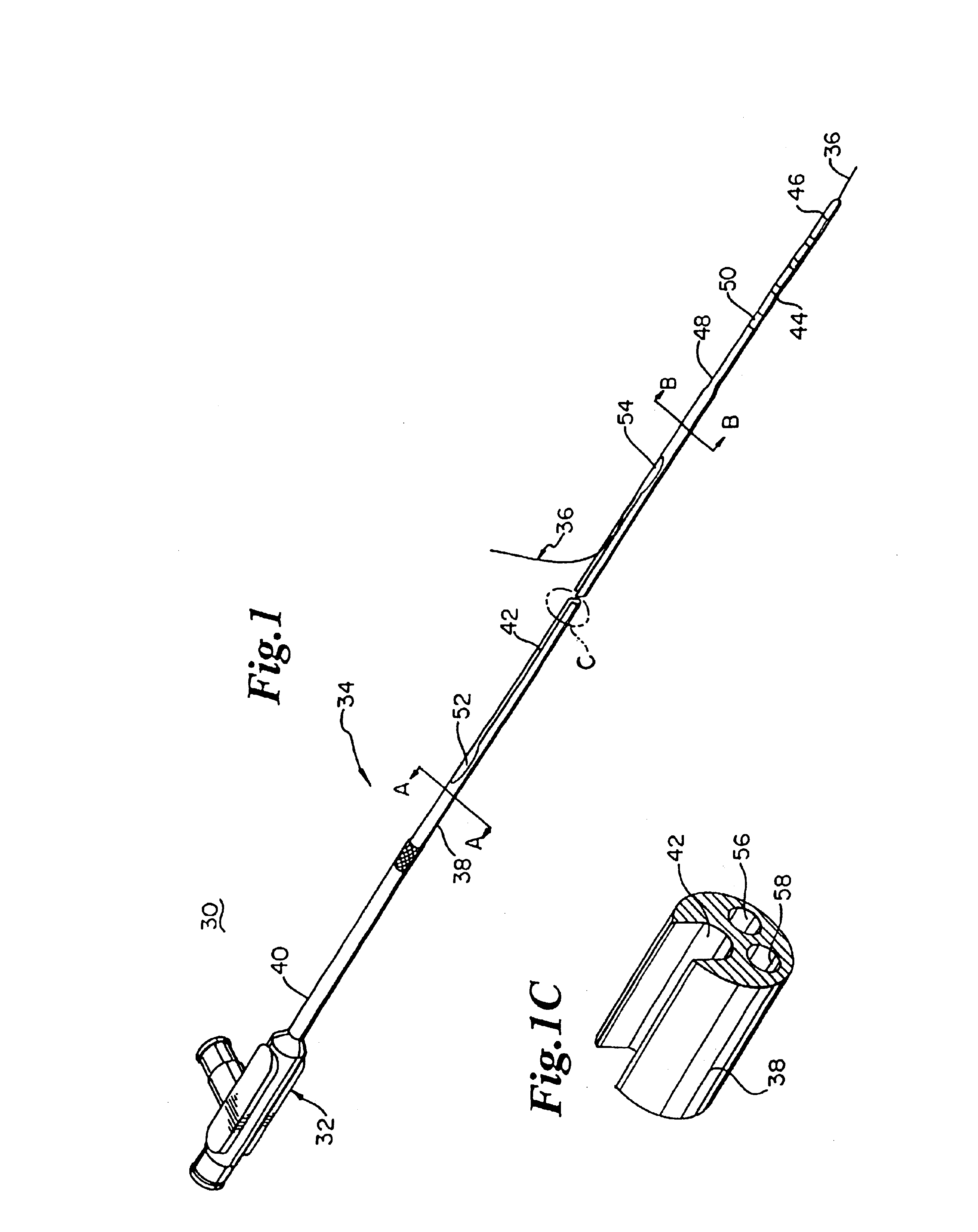Guide wire insertion and re-insertion tools and methods of use
a technology of guide wires and catheters, applied in the field of endoscopic devices and methods of use, can solve the problems of time-consuming, tedious, and difficult tasks, and achieve the effect of convenient retraction
- Summary
- Abstract
- Description
- Claims
- Application Information
AI Technical Summary
Benefits of technology
Problems solved by technology
Method used
Image
Examples
first embodiment
As illustrated in FIG. 17A, the main body 602 further includes a tongue or key 608 protruding from the interior wall of the main body 602 into the main lumen 606. The tongue or key 608 extends along at least a portion of the length of the main body 602 preferably from the proximal ridge portion 603 to a point proximal of the distal merged section 605. The tongue 608 is aligned with the slot 42 / 43 and is sized to slidingly fit within the slot 42 / 43. With this arrangement, the tongue 608 maintains proper rotational alignment between the insertion tool 600 and the catheter 30. Specifically, the tongue 608 maintains alignment between the distal opening of the funnel lumen 610 and the guide wire lumen 42 / 43 of the catheter 30 such that the guide wire is automatically aligned with the guide wire lumen 42 / 43 upon insertion into the proximal opening of the funnel lumen 610.
second embodiment
As illustrated in FIG. 17B, the main body 602 further includes a non-round engaging surface 614 extending along the interior wall of the main body 602 into the main lumen 606. The non-round engaging surface 614 extends along at least a portion of the length of the main body 602, preferably from the proximal ridge portion 603 to a point proximal of the distal merged section 605. The non-round engaging surface 614 is aligned with a similarly shaped surface 616 extending along the side of the catheter 30. Both the engaging surface 614 of the insertion tool 600 and the engaging surface 616 of the catheter 30 are non-round (e.g., flat) to inhibit the rotation of the catheter 30 relative to the insertion tool 600. Thus, the engaging surfaces 614 and 616 maintain alignment between the distal opening of the funnel lumen 610 and the guide wire lumen 42 / 43 of the catheter 30 such that the guide wire is automatically aligned with the guide wire lumen 42 / 43 upon insertion into the proximal open...
PUM
 Login to View More
Login to View More Abstract
Description
Claims
Application Information
 Login to View More
Login to View More - R&D
- Intellectual Property
- Life Sciences
- Materials
- Tech Scout
- Unparalleled Data Quality
- Higher Quality Content
- 60% Fewer Hallucinations
Browse by: Latest US Patents, China's latest patents, Technical Efficacy Thesaurus, Application Domain, Technology Topic, Popular Technical Reports.
© 2025 PatSnap. All rights reserved.Legal|Privacy policy|Modern Slavery Act Transparency Statement|Sitemap|About US| Contact US: help@patsnap.com



